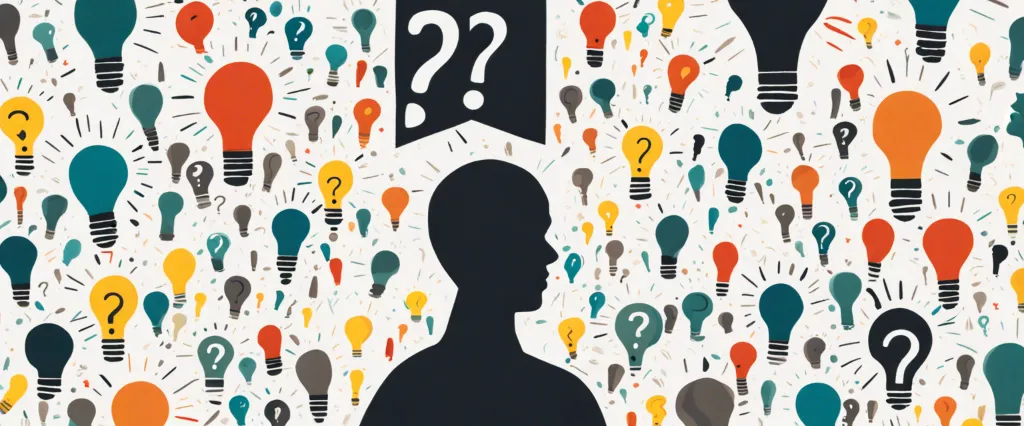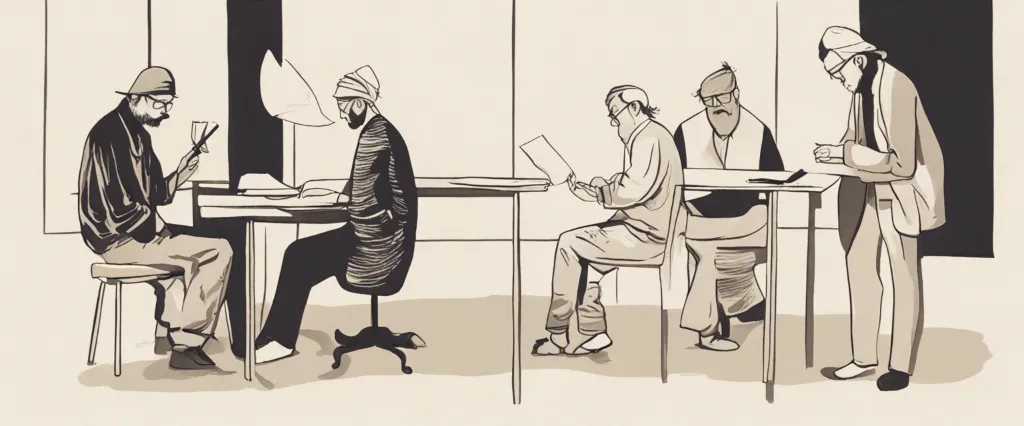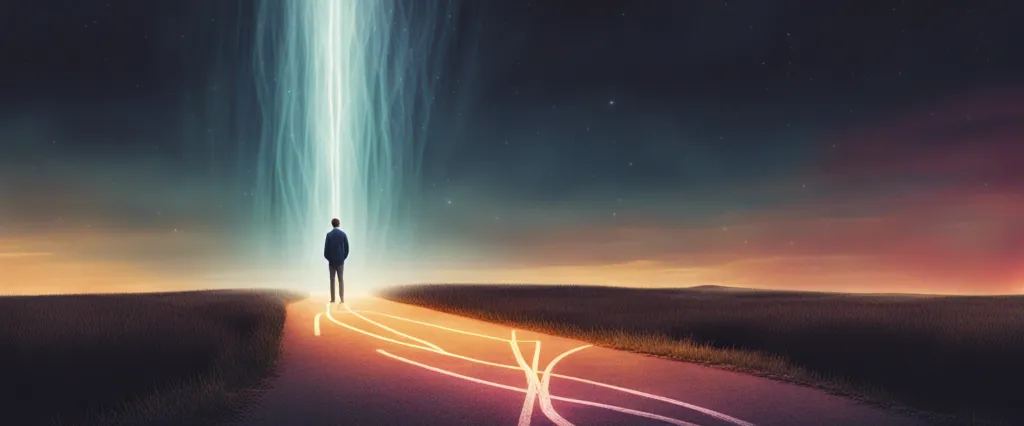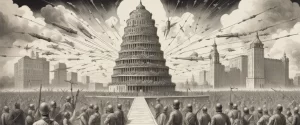——Big Magic by Elizabeth Gilbert & WabiSabi for Artists Designers Poets and Philosophers by Leonard Koren

In the realm of creative inspiration and artistic philosophy, two books stand out as guiding lights for those seeking to infuse their work with passion, purpose, and meaning. Elizabeth Gilbert’s “Big Magic” and Leonard Koren’s “Wabi-Sabi for Artists, Designers, Poets, and Philosophers” offer unique perspectives on the creative process and the pursuit of artistry. While Gilbert focuses on cultivating courage, curiosity, and creativity in order to unleash one’s creative potential, Koren delves into the Japanese aesthetic concept of wabi-sabi, emphasizing the beauty of imperfection, impermanence, and simplicity in art and life. Through a comparative analysis of these two works, we will explore the ways in which they intersect and diverge in their approaches to creativity, mindfulness, and the appreciation of beauty in the everyday.
Brief Summary of Two Books
Big Magic by Elizabeth Gilbert
“Big Magic” by Elizabeth Gilbert is a book that explores the nature of creativity and encourages readers to embrace their creative instincts. Gilbert shares her insights and experiences as a writer, and offers guidance on overcoming fear, self-doubt, and perfectionism in order to tap into one’s creative potential.
The book is divided into six sections that cover topics such as courage, enchantment, permission, persistence, trust, and divinity. Gilbert emphasizes the importance of approaching creativity with a lighthearted and playful attitude, rather than burdening oneself with the pressure of producing perfect work. She encourages readers to follow their curiosity, explore their passions, and pursue creative endeavors for the sheer joy of it.
Throughout the book, Gilbert shares personal anecdotes and stories from her own creative journey, offering practical advice and inspirational wisdom. She challenges the notion that creativity is a rare and mystical talent reserved for a select few, and instead argues that creativity is a natural and inherent part of being human.
Overall, “Big Magic” is a refreshing and empowering guide for anyone seeking to unlock their creative potential and live a more vibrant and fulfilling life. Gilbert’s warm and engaging writing style, combined with her insightful reflections on creativity, make this book a valuable resource for artists, writers, and anyone looking to cultivate their creative spark.
WabiSabi for Artists Designers Poets and Philosophers by Leonard Koren
“Wabi-Sabi for Artists, Designers, Poets, and Philosophers” by Leonard Koren is a book that explores the Japanese aesthetic principle of wabi-sabi, which celebrates the beauty of imperfection, impermanence, and simplicity. Koren discusses how this philosophy can be applied to various creative disciplines, such as art, design, and poetry, to create works that are both visually striking and emotionally resonant. Through examples and insights, the book encourages readers to embrace the imperfect and find beauty in the everyday.
Comparison between Two Books

Similarities in Creativity
Both Big Magic and Wabi-Sabi for Artists Designers Poets and Philosophers emphasize the importance of embracing creativity as a natural and essential part of life. Elizabeth Gilbert and Leonard Koren both stress the idea that creativity comes from within and should be nurtured and honored.
In Big Magic, Gilbert encourages readers to pursue creativity for its own sake, without worrying about external validation or success. She emphasizes the need to create for the joy of creating, rather than for any specific outcome. Similarly, Koren discusses how creativity should be a personal, introspective journey that brings fulfillment and meaning to the creator.
Both books also explore the concept of inspiration and how it can strike unexpectedly. Gilbert describes creativity as a force that flows through us, while Koren compares it to a spiritual experience that requires openness and receptivity. Both authors encourage readers to be open to new ideas and to trust their instincts when it comes to creative pursuits.
Overall, Big Magic and Wabi-Sabi for Artists Designers Poets and Philosophers share a common belief in the transformative power of creativity and the importance of embracing it in all its forms. Both books offer insights and guidance for those seeking to tap into their creative potential and live more authentically.
Divergences in Creativity
Both “Big Magic” by Elizabeth Gilbert and “Wabi-Sabi for Artists, Designers, Poets & Philosophers” by Leonard Koren explore the concept of creativity, but they approach it from different perspectives.
In “Big Magic,” Gilbert discusses creativity as a mystical and magical force that seeks to collaborate with individuals in order to bring forth new ideas and creations. She encourages readers to embrace their curiosity, take risks, and approach creativity with a sense of playfulness and lightness. Gilbert emphasizes the importance of showing up and doing the work, regardless of fear or self-doubt, in order to allow inspiration to flow freely.
On the other hand, Koren’s “Wabi-Sabi” focuses on the Japanese aesthetic philosophy of finding beauty in imperfection, impermanence, and the authenticity of natural materials and textures. Koren suggests that true creativity comes from a deep understanding and appreciation of the inherent imperfections and transience of life. He encourages artists and creators to let go of perfectionism and control in order to embrace the beauty of simplicity and imperfection.
The divergence in their views on creativity lies in their emphasis on different aspects of the creative process. Gilbert leans towards the idea of inspiration as a divine force that individuals tap into, while Koren emphasizes the importance of embracing imperfection and impermanence as integral components of the creative journey. Ultimately, both books offer valuable insights and perspectives on creativity, inviting readers to approach their creative pursuits with openness, curiosity, and authenticity.

Conclusion
The answer to this question ultimately depends on the individual reader’s interests and preferences. “Big Magic” by Elizabeth Gilbert is a book about creativity and inspiration, encouraging readers to embrace their creativity without fear. It may be more suitable for those looking for motivation and guidance in their creative pursuits.
On the other hand, “Wabi-Sabi for Artists, Designers, Poets & Philosophers” by Leonard Koren explores the Japanese aesthetic philosophy of wabi-sabi, which emphasizes finding beauty in imperfection and impermanence. This book may be more appealing to those interested in art, design, and philosophy, and looking to incorporate wabi-sabi principles into their creative work.
Both books offer unique perspectives on creativity and artistry, so it may be worth considering which topic resonates more with the reader to determine which book is more worthy of reading.


